Emerald ash borer bears down on Mississippi
An unwelcomed guest is knocking on Mississippi’s door. It has already moved in to neighboring states and spread across the eastern part of the country. It brings destruction wherever it makes its home, and it has its eyes set on the Magnolia State.
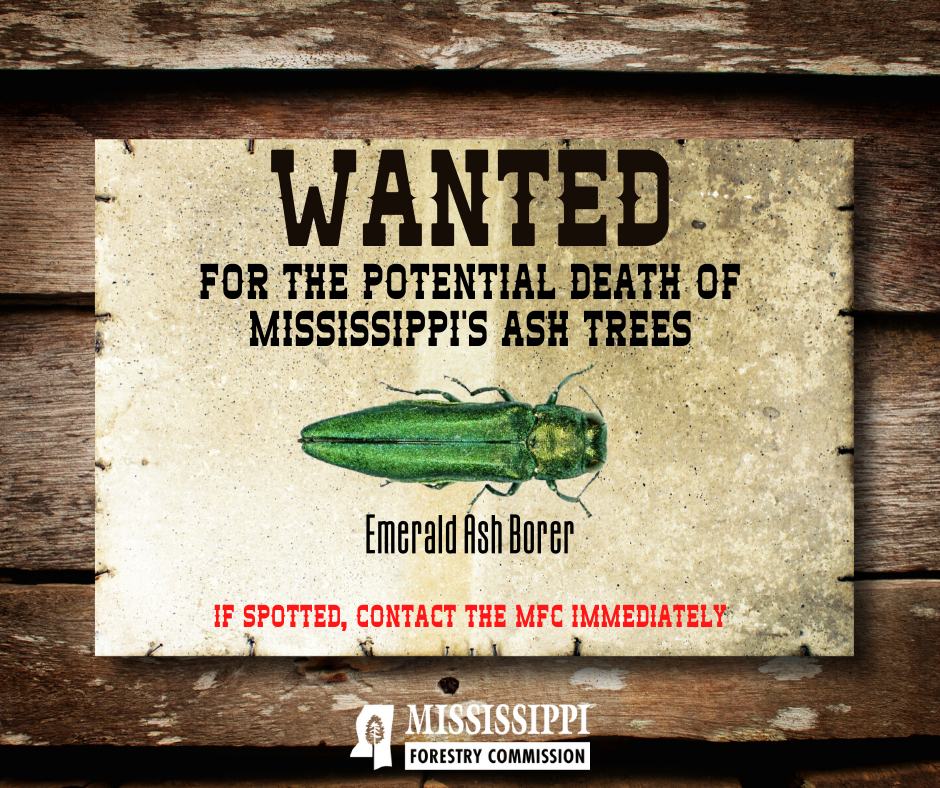
Background
The emerald ash borer is an invasive, non-native pest that has killed millions and millions of trees across the eastern U.S. We strongly believe it is only a matter of time before this forest pest finds its way into Mississippi.
Russell Bozeman, MFC state forester
The emerald ash borer (EAB), Agrilus planipennis, is an exotic beetle discovered in the United States in 2002 near Detroit, Mich. Since then, it has spread to 35 states and five Canadian provinces. Mississippi and Florida are the only states east of the Mississippi River that have reported no EAB infestations to date.
Originally from Asia, the EAB is believed to have entered the country on infested solid wood packing material or wooden pallets.
EAB Identification
The adult EAB is bright metallic green, bullet-shaped and about the size of a dime. Eggs are extremely small and reddish-brown in color, while larvae are white, flat-headed borers with distinct segmentation.
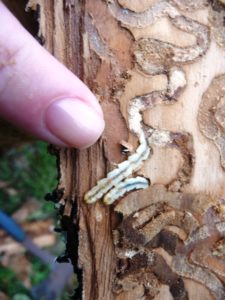
Adults typically emerge in late spring from infestations the previous year. Females lay their eggs shortly after emergence in crevasses in the tree bark. Eggs hatch in seven to 10 days.
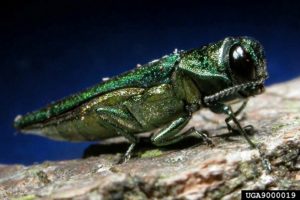
What it does
Hosts include all ash species, however, green ash, white ash and black ash are more susceptible than Asian varieties.
EAB larvae bore into the ash tree and feed under the bark, creating winding galleries as they feed. These galleries cut off the flow of water and nutrients to the tree, leading to dieback, bark splitting and, eventually, tree mortality.
“In Mississippi, ash trees don’t make up a very large percentage of merchantable wood,” Bozeman said. “However, ash trees are widely used in urban landscapes as ornamentals and shade trees. An EAB outbreak would be costly to those communities with numerous ash trees.”
Signs of EAB
Early detection can be difficult because it can take up to three years before an ash tree begins to show signs of decline or mortality.
Adult EAB leave D-shaped holes in trunks and branches after emergence, while larvae bore S-shaped galleries under the bark.
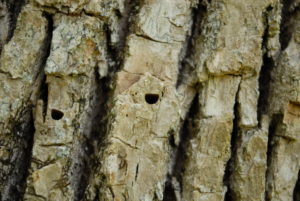
Once the tree is infested and the EAB population builds, the leaves begin to wilt and branches die, leaving a sparse canopy. This dieback starts in the top third of the canopy and progresses until the tree is bare.
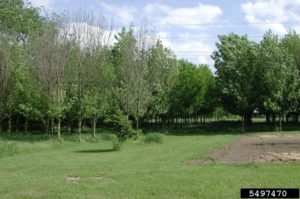
Another sign of EAB infestation is the emergence of epicormic shoots. Sprouts will begin to grow from roots and the trunk, where nutrients are still plentiful. In these epicormics shoots, leaves are often larger than normal.
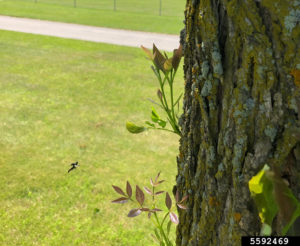
Bark splitting will occur due to scar tissue formation. Larval S-shaped galleries are exposed under the bark split.
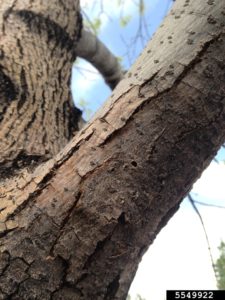
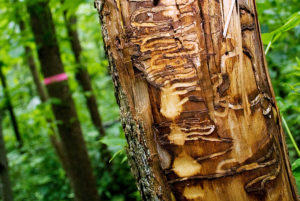
Additionally, increased woodpecker activity and damage can be a sign of EAB infestation. A number of woodpecker species feed on EAB larvae and create large holes when extracting EAB from the tree.
How are EAB spread and how to stop it
The EAB is primarily spread by humans through the transportation of infested firewood, wood pallets and other ash products.
To help prevent the spread of EAB into Mississippi, the MFC offers this list of things the public can do.
- If you suspect you have an EAB infestation, report it immediately to your local MFC forester. Click here to find your forester.
- If possible, take photos of the insect and damage.
- Don’t move firewood a distance of more than five miles.
- Buy firewood from local sources and burn it where you buy it.
- Buy kiln-dried firewood.
- Before spring, burn remaining firewood to prevent EAB from spreading to live trees.

“The Mississippi Forestry Commission is preparing to handle an EAB outbreak at the state level, but we need the help of local governments and private landowners,” said Bozeman. “If you have ash trees on your property or in your community, learn what the EAB looks like and how to recognize the signs of an infestation. If you see or suspect an EAB infestation, report it to the MFC immediately.”
The MFC will be conducting EAB surveys in multiple counties across the state later this year. The public is encouraged to be on the lookout for EAB signs and report them to the MFC immediately.
Click here for more information about the emerald ash borer.
